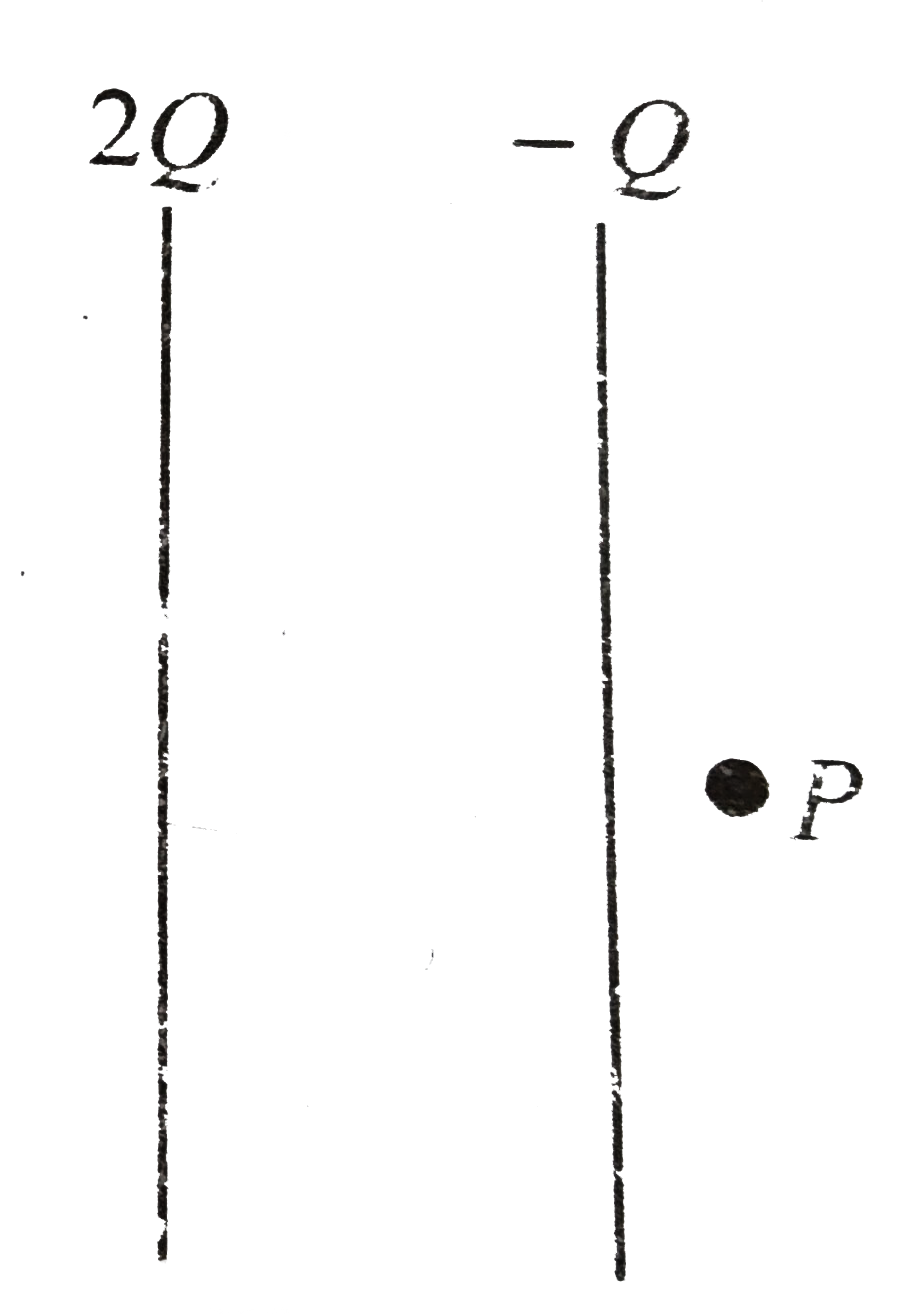One plate of a parallel plate capacitor is given a charge of 2μC. What charge will appear on four surfaces of the capacitor?
To solve the problem of how the charge distributes on the surfaces of a parallel plate capacitor when one plate is charged with 2μC, we can follow these steps:
1. Understanding the Capacitor Configuration:
- A parallel plate capacitor consists of two plates. When one plate is charged, it creates an electric field between the plates and induces charges on the surfaces of both plates.
2. Charge on the Plates:
- Let’s denote the charge on the positively charged plate as Q=2μC. This charge will influence the charges on the surfaces of both plates.
3. Identifying the Surfaces:
- In a parallel plate capacitor, we can identify four surfaces:
- Surface 1: Top surface of the positively charged plate.
- Surface 2: Bottom surface of the positively charged plate.
- Surface 3: Top surface of the negatively charged plate.
- Surface 4: Bottom surface of the negatively charged plate.
4. Charge Distribution:
- The positively charged plate (with charge Q) will have a positive charge on its surfaces. The bottom surface (Surface 2) will have a charge of +Q (which is +2μC).
- The top surface (Surface 1) of the negatively charged plate will have an induced negative charge due to the electric field created by the positive plate. This charge will be equal in magnitude but opposite in sign, thus it will be −Q (which is −2μC).
- The bottom surface (Surface 4) of the negatively charged plate will also have a charge of −Q (which is −2μC).
5. Final Charge on Each Surface:
- Surface 1 (top of the positive plate): +2μC
- Surface 2 (bottom of the positive plate): +2μC
- Surface 3 (top of the negative plate): −2μC
- Surface 4 (bottom of the negative plate): −2μC
Summary of Charges on Surfaces:
- Surface 1: +2μC
- Surface 2: +2μC
- Surface 3: −2μC
- Surface 4: −2μC
- A parallel plate capacitor consists of two plates. When one plate is charged, it creates an electric field between the plates and induces charges on the surfaces of both plates.
- Let’s denote the charge on the positively charged plate as Q=2μC. This charge will influence the charges on the surfaces of both plates.
- In a parallel plate capacitor, we can identify four surfaces:
- Surface 1: Top surface of the positively charged plate.
- Surface 2: Bottom surface of the positively charged plate.
- Surface 3: Top surface of the negatively charged plate.
- Surface 4: Bottom surface of the negatively charged plate.
- The positively charged plate (with charge Q) will have a positive charge on its surfaces. The bottom surface (Surface 2) will have a charge of +Q (which is +2μC).
- The top surface (Surface 1) of the negatively charged plate will have an induced negative charge due to the electric field created by the positive plate. This charge will be equal in magnitude but opposite in sign, thus it will be −Q (which is −2μC).
- The bottom surface (Surface 4) of the negatively charged plate will also have a charge of −Q (which is −2μC).
- Surface 1 (top of the positive plate): +2μC
- Surface 2 (bottom of the positive plate): +2μC
- Surface 3 (top of the negative plate): −2μC
- Surface 4 (bottom of the negative plate): −2μC
- Surface 1: +2μC
- Surface 2: +2μC
- Surface 3: −2μC
- Surface 4: −2μC
Topper's Solved these Questions
- ELECTROSTATIC POTENTIAL AND CAPACITANCE Book:MODERN PUBLICATIONChapter:ELECTROSTATIC POTENTIAL AND CAPACITANCE Exercise:PRACTICE PROBLEMS 1
Explore 10 Videos
- ELECTROSTATIC POTENTIAL AND CAPACITANCE Book:MODERN PUBLICATIONChapter:ELECTROSTATIC POTENTIAL AND CAPACITANCE Exercise:PRACTICE PROBLEMS 2
Explore 21 Videos
- ELECTROMAGNETIC WAVESBook:MODERN PUBLICATIONChapter:ELECTROMAGNETIC WAVESExercise:CHAPTER PRACTICE TEST
Explore 14 Videos
- MAGNETISM AND MATTERBook:MODERN PUBLICATIONChapter:MAGNETISM AND MATTERExercise:CHAPTER PRACTICE TEST FOR BOARD EXAMINATION
Explore 16 Videos
Similar Questions
The negative plate of a parallel plate capacitor is given a charge of −20X10−8C. Find the charges appearing on the four surface of the capacitor plates.

View SolutionThe charges appearing on inner surfaces of a parallel plate capacitor are q_( i and )q_(2) . The charges appearing on outer surfaces of the capacitor are equal.Find the potential difference between plates of the capacitor if capacitances is C.
View Solution
Knowledge Check
A parallel plate capacitor C has a charge Q. The actual charges on its plates are
AQ,QBQ/2, Q/2CQ,-QDQ/2. - Q/2The capacity of a parallel plate air capacitor is 10μF and it is given a charge of 40μC. The electrical energy stored in the capacitor is
A400 ergB600 ergC800 ergD900 ergA parallel plate capacitor is charged. If the plates are pulled apart
Athe potential difference increasesBthe capacitance increasesCthe total charge increasesDthe charge and the potential difference remain the same
A charge of 1μC is given to one plate of a parailel - plate capacitor of capacitance 0.1μF and a charge of 2μC is given to the other plate . Find the potential difference developed between the plate .
View SolutionIf the plates of a parallel plate capacitor are not equal in area then quantity of charge
View SolutionIn figure , the plates of a parallel plate capacitors have unequal charges. Its capacitance is C. P is a point outside the capacitor and close to the plate of charge -Q. The distance between the plates is d. Then

View SolutionIn the figure shown the plates of a parallel plate capacitor have unequal charges. Its capacitance is 'C' P is a point outside the capacitor and close to the plate of charge −Q. The distance between the plates is 'd'

View SolutionOne plate of parallel plate capacitor is smaller than the other, the charge on the smaller plate will be.
View Solution

